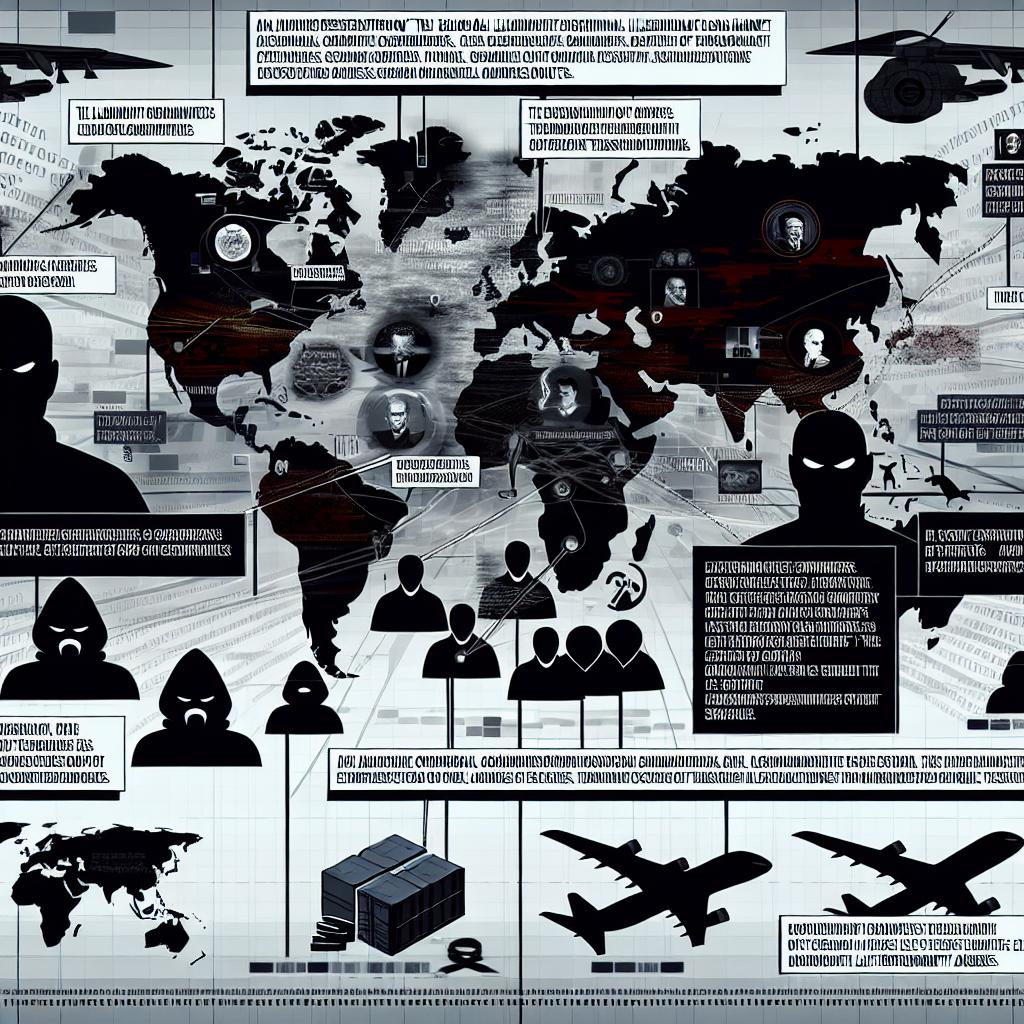The Structure of Drug Cartels
Drug cartels are sophisticated organizations that play a pivotal role in the illegal drug trade. These entities operate with military-like precision and complexity. Typically, at the apex of a cartel is the leader or a group of leaders responsible for strategic decisions and directing the cartel’s operations. Below them are layers of operatives tasked with various roles, from production to distribution. In this expanded discussion, we aim to provide a deeper understanding of the operations and organizational structure of these complex entities.
Production and Manufacturing
The initial stage in the drug trade involves the cultivation and production of illegal substances. Drug cartels oversee the growth of raw materials such as coca plants for cocaine or opium poppies for heroin. The cultivation of these raw materials often necessitates expansive rural territories, where local farmers might work under the direct or indirect control of cartel members. In addition to natural substances, cartels are also involved in the synthesis of drugs, such as methamphetamine and other synthetic narcotics. The process requires the establishment of production facilities, which can range from large rural plantations to urban synthetic labs, often specifically designed to evade detection by regulatory authorities.
Production is a critical phase in the supply chain, requiring advanced knowledge of chemical processes and agricultural methods. Cartels employ chemists and agricultural experts to maximize yield and efficiency. While plantations for plant-based drugs are mostly in remote areas, laboratories for synthetic drugs are often hidden within urban or suburban environments to exploit infrastructure and logistical support systems.
Transportation and Distribution
Once produced, drugs must be transported to consumer markets, both domestically and internationally. This process is fraught with numerous challenges, primarily due to law enforcement efforts to curb drug trafficking. However, cartels have continually adapted, employing extensive networks to achieve their goals. The transportation of drugs often involves innovative methods to smuggle substances across national and international borders. These methods might include hidden compartments in vehicles, elaborate tunnel systems linking one country to another, or the use of airplanes and boats equipped with sophisticated evasion technology.
Upon crossing borders, drugs enter distribution networks within countries to ensure a steady flow of products to marketplaces. These networks are tiered and rely on a robust network of collaborators, including wholesalers who receive large quantities of narcotics, intermediaries who manage logistics and local distribution, and retailers who distribute the drugs at the street level. Each segment of the network is designed to be compartmentalized to limit the risk of law enforcement penetrating higher levels of operation.
Financial Operations
Managing finances is crucial to the sustainability of drug cartels. These organizations generate enormous revenues and employ advanced methods to handle this wealth. A key aspect of their financial strategies involves money laundering, which obscures the illicit origins of their profits. This process often involves moving money through a series of complex transactions across various financial systems. Cross-border transactions, offshore bank accounts, and investments in cryptocurrencies are common tactics employed to cleanse dirty money.
Furthermore, some cartels invest in legitimate business ventures to further launder their earnings. This can include investments in industries with heavy cash flows, such as casinos, real estate, and hospitality. By integrating their illicit funds into legitimate economic activities, cartels not only clean their money but also create additional sources of income and influence in legal sectors.
Operational costs also include bribery, maintaining security, logistical expenses, and rewarding loyalty within the ranks. The financial acumen of cartels ensures that they remain influential and potent, capable of quickly adapting to changing economic and regulatory landscapes.
Violence and Corruption
The role of violence in the operations of drug cartels cannot be overstated. Cartels often resort to intimidation, extortion, and outright violence to maintain control over their territories and enforce discipline within their ranks. Violence is used strategically: to settle disputes, punish betrayal, and demonstrate power both internally and externally. Public displays of violence can serve as a deterrent to rivals and law enforcement, reinforcing a cartel’s control over its domain.
Corruption is another tool frequently employed by cartels. By infiltrating law enforcement agencies, political institutions, and the judicial system, cartels secure protection or favorable treatment. This corruption can manifest as bribery, where officials receive financial incentives to overlook illegal activities or provide intelligence on law enforcement operations.
Moreover, cartels may actively seek to place their operatives within key institutions to manipulate operations from the inside. The corruption and violence endemic in cartel operations create a vicious cycle that undermines governance and the rule of law in affected regions. This erosion of formal legal frameworks serves to further entrench the power and influence of drug cartels.
In conclusion, drug cartels are an integral component of the illegal drug trade, functioning as complex organizations that combine elements of business acumen, military tactics, and criminal operations. Understanding their operations provides insight into the broader dynamics of global narcotics trafficking, highlighting the immense challenges faced by governments and law enforcement agencies worldwide. These organizations exemplify a dark facet of globalization, where the demand for illegal substances fuels a persistence of economic disparity and undermines efforts at establishing equitable and just societies.
For more information on the subject, consider exploring resources like reports published by the United Nations Office on Drugs and Crime or articles from reliable news outlets. These resources offer insights into the ongoing efforts to combat drug trafficking and the evolving strategies employed by drug cartels around the world.





